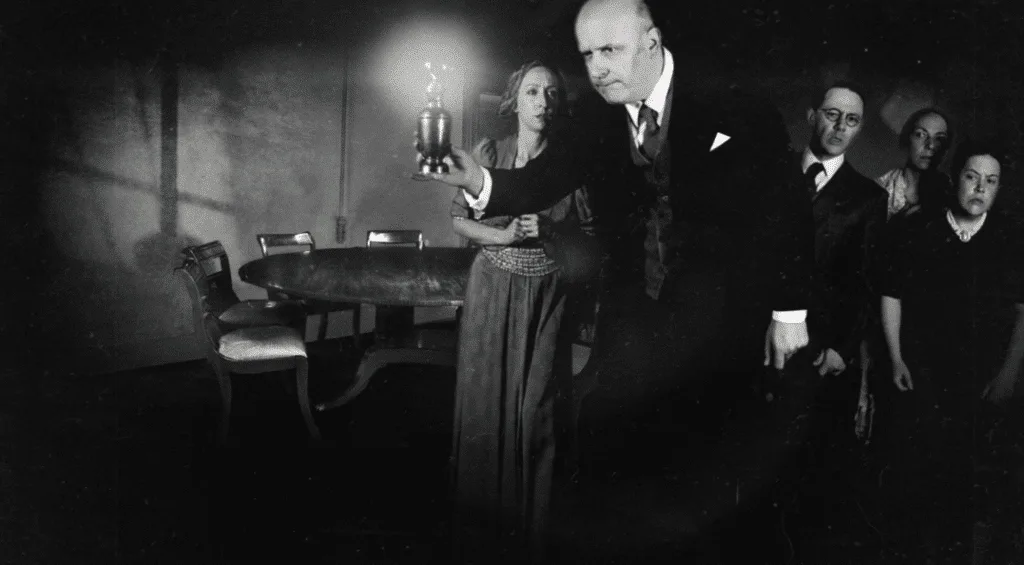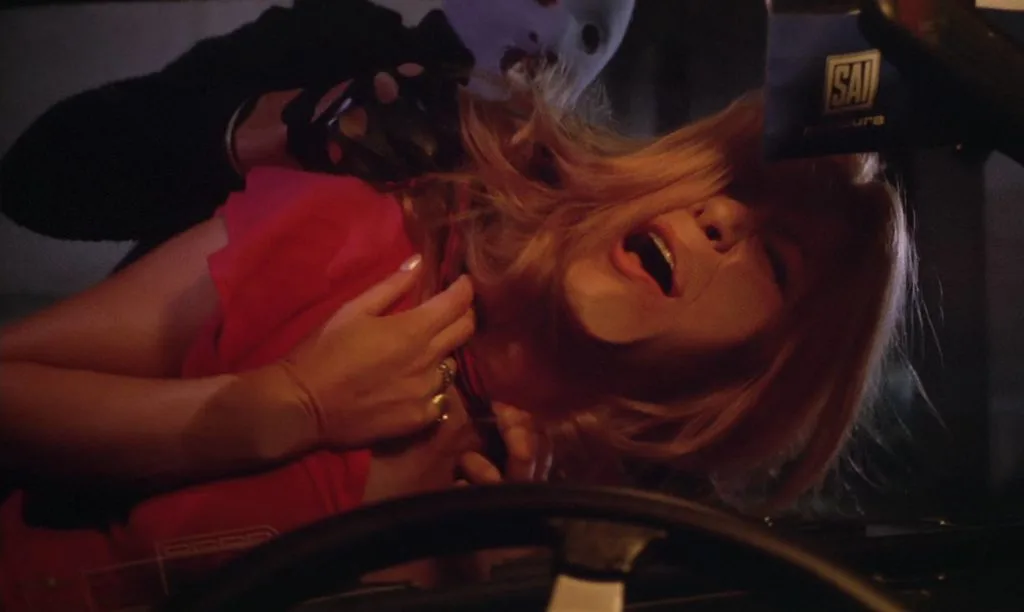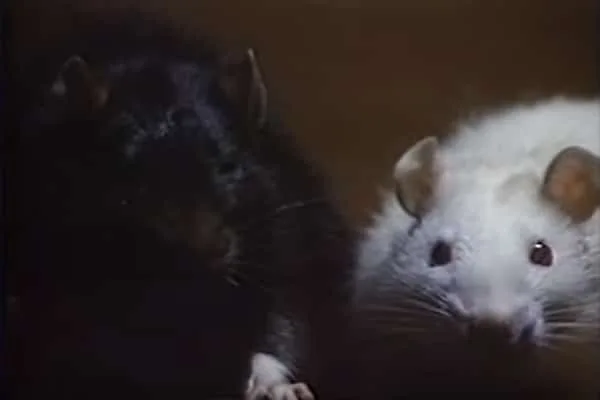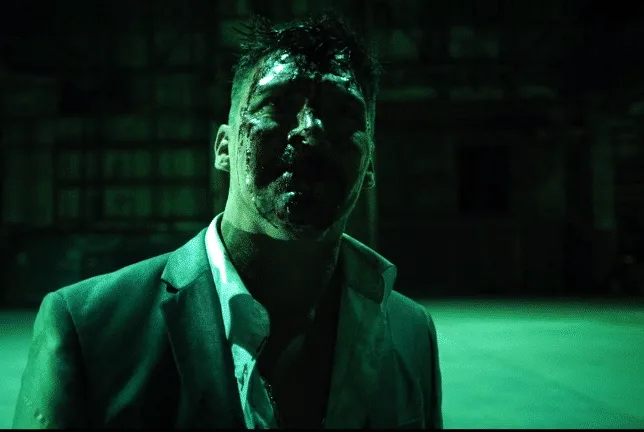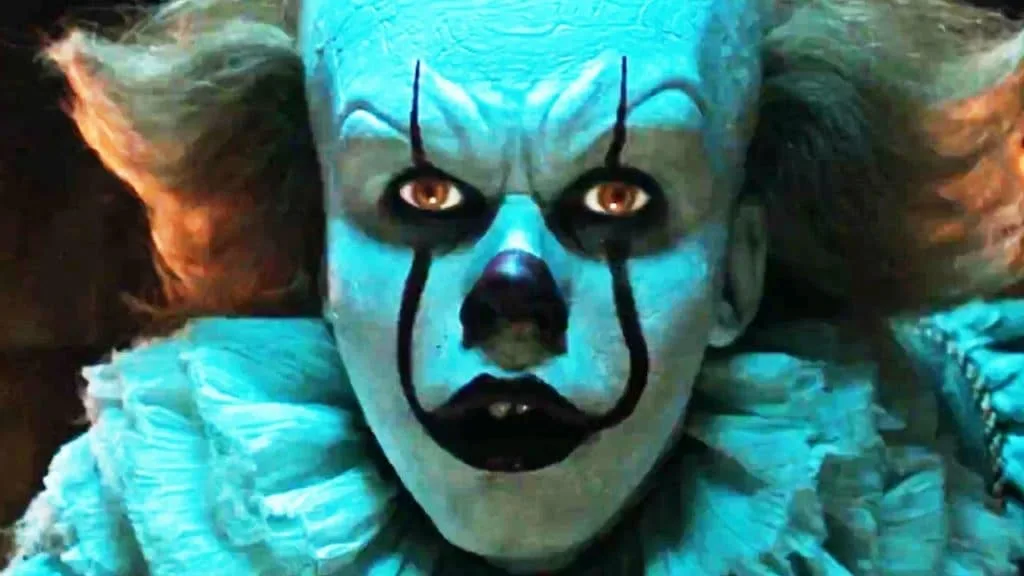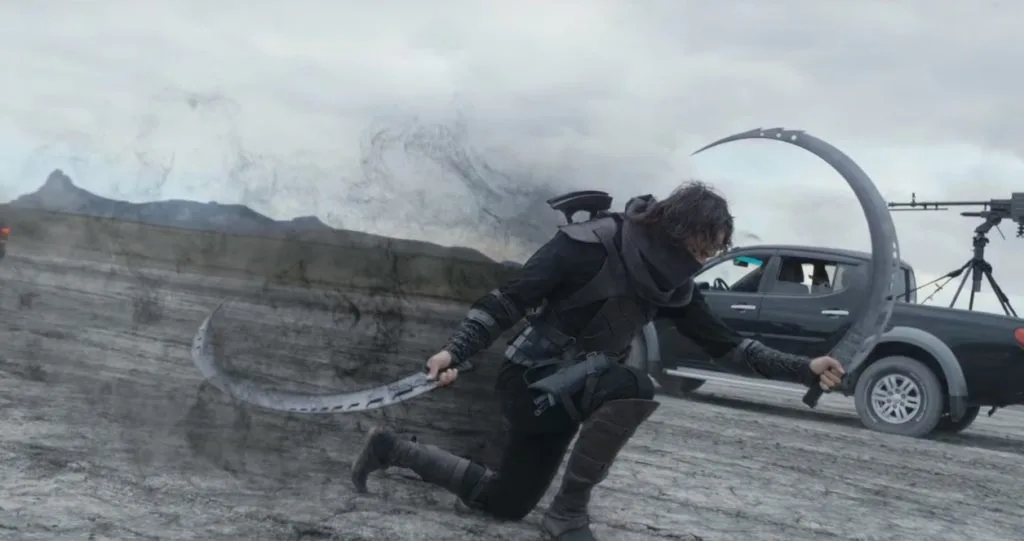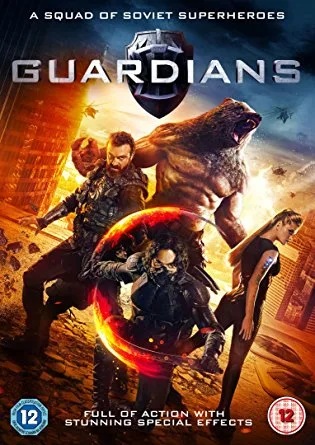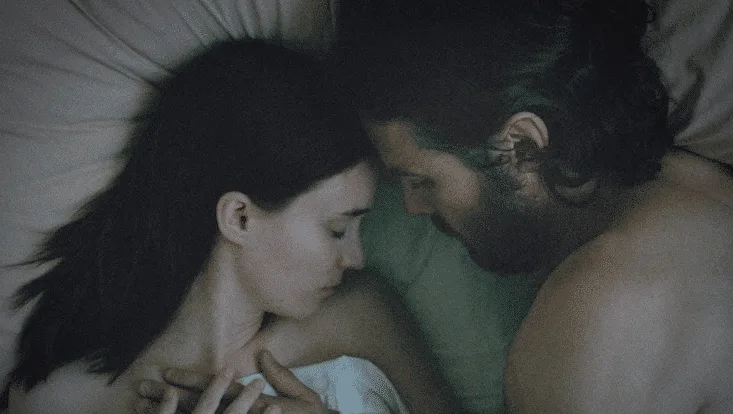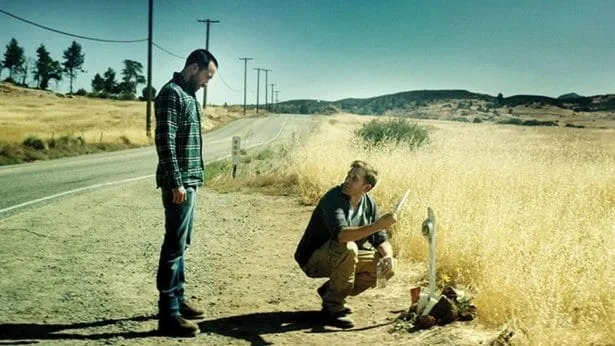
Justin and Aaron (as in the characters) are living the dream. You know, that awful dream where you work your fingers to the bone to make minimum wage cleaning up after other people simply to eke out an existence. Justin seems to have made peace with this; his brother, Aaron, has not. Admittedly, their lives have never been easy or straightforward: ten years ago, they escaped from a place called Camp Arcadia, a cult where they had both been raised. Justin masterminded their escape with the best of intentions, but Aaron is struggling with his so-called freedom. Receiving a mysterious video through the post – where one of the inmates of the camp seems to be alluding to some sort of suicide pact – only helps to drive Aaron towards a decision: he wants to go back. Not to stay, he insists, but to say a proper goodbye. Justin reluctantly agrees to go with him, and so they make the long drive into the back of beyond.
When I first saw that there was an ominous circle motif being repeated, then a huge circular pit at the camp, I thought: Jug Face. Was this going to be another tale about an isolated community gone rogue, playing by its own rules? Well, in a way that’s true, but any expectations of blank-eyed backwoods folk were not to be fulfilled. Jug Face is a superb film, but this particular cult isn’t savage. Far from it.
Things at the camp are…fine. Better than fine. There’s been no Kool Aid incident, and if anything, life at Camp Arcadia compares all too favourably with life on the outside. Sure, it’s a little remote, but all that fresh air, fresh food and homemade beer seems like a far better deal than snacking on ready meals in-between cleaning jobs. The people who live there seem quite normal, too, and with the exception of ‘Smiling Dave’, no one appears particularly happy-clappy. Hal, the leader of the group (though he protests otherwise) seems pleased to see the two brothers, and they’re made welcome. So far, so good. Thing is, when they ask a girl called Anna why she sent them that strange video message, she (plausibly) denies all knowledge of it. The most obvious question – the question of who really sent it – soon breeds others. There seems to be some sort of malign force at play which has brought the brothers back to Camp Arcadia, for some as-of-yet inexplicable reason. As Justin and Aaron begin to understand all of this, the fabric of everything seems about to rend in two: at the camp, time and place are not what they seem.
I really feel that saying much more about the plot would spoil it, so please forgive all the following abstractions…

To leave it at that would undersell the film, though. Unlike Lovecraft, slivers of (intentional) humour underpin the growing sense of alienation throughout without undermining the darker elements. Sympathetic portrayals of Aaron and Justin, a first starring role for Benson and Moorhead, also allow a more relaxed, relatable feel to the film. The Endless is beautifully shot, too, with a sense of space and place which dwarfs its characters.
Benson and Moorhead have past form with this kind of ambitious handling. I credited Spring (2014) with how successfully it realised a lofty aim: creating a brand new mythology. Here, by linking in with other themes Moorhead and Benson have explored on film previously – and I’ll say no more about that here – The Endless successfully merges a study of family dynamics with something altogether more horrific. It’s believably realistic at the same time that it’s abstract and alienating. A lot of that stems from the terrors of analogue technology, used to subtle but compelling effect here once again. I think people of a certain age – namely those growing up in the Eighties and Nineties – will appreciate the fact that the visual distortions and audio disturbances on old video and audio tapes could be very creepy indeed. This theme appeared in Resolution, and it’s used to superb effect in The Endless.
Honestly, in many ways this has been a tough review to write – not because I have nothing to say, clearly – all these words in – but because I’m struggling to think of ways to balance out all the praise. But then, the first two films each made my top three films of their release year, so I suppose there’s no real reason to play coy now. The Endless is an intricate and subtle horror which never quite shows its hand. Messrs Benson and Moorhouse should be known absolutely everywhere by now; that they’re not is disappointing, no doubt more for them than for us, but while we live in a world where huge studios effectively buy people’s admiration, it makes this kind of unique cinema all the more compelling. See it if you can. In fact, see all of their films, and don’t skimp on Resolution. They all deserve your time.


